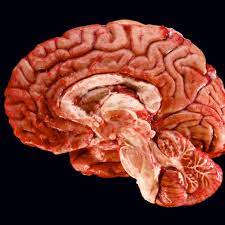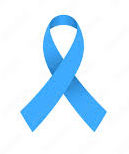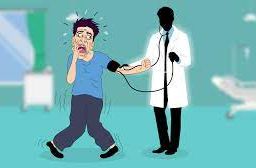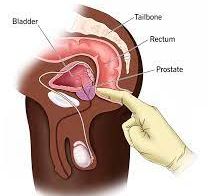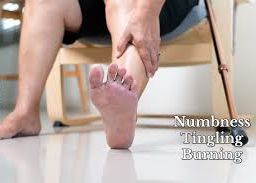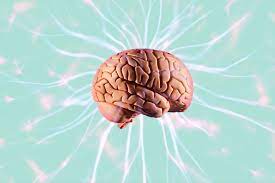
Essential Tips for Seizure Management: A Comprehensive Guide
Seizures, characterized by abnormal electrical activity in the brain, can significantly impact one’s daily life. Whether you or someone you know is navigating the complexities of seizures, understanding the nuances of this condition is paramount. Dive into this comprehensive guide to grasp the intricacies of seizures, from their types and causes to effective management strategies.

Living with seizures or epilepsy can be challenging, but understanding your condition and taking proactive steps can make a significant difference in managing your health effectively. Seizures are neurological events characterized by abnormal electrical activity in the brain. They can manifest in various ways and can result from a wide range of underlying causes. If you or someone you know has been diagnosed with seizures or epilepsy, there are several important things that every patient should know and consider.
Types of Seizures:
– Generalized Seizures: These affect the entire brain and can be further categorized into different types, including tonic-clonic (formerly known as grand mal), absence (formerly known as petit mal), atonic, and myoclonic seizures.
– Focal Seizures: These originate in a specific part of the brain and may or may not spread to involve the entire brain. Focal seizures can be divided into focal onset aware and focal onset impaired awareness seizures.
Causes of Seizures:
– Epilepsy: A chronic neurological condition characterized by recurrent seizures. It can be caused by genetic factors, brain injuries, infections, or developmental abnormalities.
– Other Causes: Seizures can also result from various other factors such as high fever (febrile seizures), head trauma, brain tumors, infections, metabolic disorders, drug withdrawal, and stroke.
Symptoms of Seizures:
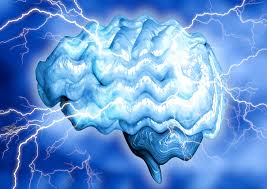
– Seizure symptoms can vary widely depending on the type of seizure. Common symptoms include loss of consciousness, convulsions (jerking movements), confusion, staring spells, muscle stiffness, and repetitive movements.
– Some seizures are accompanied by auras, which are unusual sensations or feelings that can act as warning signs of an impending seizure.
Diagnosis of Seizures:
– A comprehensive medical evaluation is essential to diagnose the underlying cause of seizures. This may include medical history, physical examination, neurological tests, blood tests, imaging (like MRI or CT scans), and electroencephalogram (EEG) to measure brain activity.

Treatment of Seizures:
– Medication: Antiepileptic drugs (AEDs) are often prescribed to manage and prevent seizures. The choice of medication depends on the type of seizure and its underlying cause.
– Surgery: In some cases, surgical procedures may be recommended to remove the area of the brain responsible for seizures or to implant devices like vagus nerve stimulators.
– Lifestyle Changes: Avoiding triggers (e.g., lack of sleep, stress, alcohol, flashing lights), getting enough sleep, and maintaining a healthy lifestyle can help manage seizures in some individuals.
Here are some key things you should know about seizures:

1. Understand Your Diagnosis:
– The first step in managing seizures is understanding your specific diagnosis. Seizures come in various forms, such as generalized and focal seizures, and pinpointing your type is crucial for tailored treatment.
2. Follow Your Treatment Plan:
– Adhering to your prescribed treatment plan is paramount. Consistency with medication and therapy, if recommended, is essential for seizure control.
3. Maintain a Seizure Diary:
– Keeping a seizure diary allows you to track crucial information about your seizures, including triggers, frequency, and duration. This tool can help you identify patterns and make informed decisions about your care.
4. Identify and Manage Triggers:
– Some seizures are triggered by specific factors like stress, lack of sleep, alcohol, or flashing lights. Identifying your triggers and taking steps to mitigate them can help reduce the likelihood of seizures.
5. Safety Precautions at Home:
– Creating a safe environment at home is vital. Remove or secure potential hazards, consider padded flooring in risk-prone areas, and wear a medical alert bracelet or carry an ID card indicating your condition for emergencies.
6. Medication Management:
– Be diligent about taking your medication as prescribed by your healthcare provider. Consistency is crucial in controlling seizures. Be aware of potential side effects and report any unusual symptoms to your healthcare provider. Communicate openly with your healthcare provider about any side effects or concerns.
7. Regular Medical Check-ups:
– Routine check-ups with your neurologist or healthcare provider are essential for monitoring your condition and making necessary adjustments to your treatment plan.
8. Lifestyle Considerations:
– Maintain a healthy lifestyle by getting regular exercise, eating a balanced diet, and managing stress. Alcohol and recreational drugs can exacerbate seizures, so limit or avoid them. Ensure you get adequate sleep, as sleep deprivation can trigger seizures in some individuals.
9. Driving and Employment:
– Understand the driving laws and restrictions in your area regarding epilepsy and seizures. Be mindful of safety precautions, such as not bathing alone, using safety equipment when necessary, and taking precautions around open flames or water. Consult with your healthcare provider for guidance and discuss your condition with your employer for necessary accommodations.
10. Building a Support System:
– Lean on friends and family for support during and after seizures. Consider joining support groups or connecting with epilepsy advocacy organizations for additional assistance. Pay attention to your emotional well-being, as dealing with seizures can be stressful. Seek counseling or support groups if needed.
11. Seizure Action Plan:
– Create a seizure action plan in consultation with your healthcare provider. This plan should include steps for managing seizures at home and what to do in case of emergency. Develop a clear emergency plan with instructions for caregivers and loved ones on how to respond during a seizure and when to seek medical help.
12. Education:
– Empower yourself through education about epilepsy and seizures. Knowledge is your ally in making informed decisions about your health. Educate those around you about seizures and epilepsy to dispel myths and reduce stigma. Stay informed about the latest developments in epilepsy research and advocacy efforts. Participating in or supporting these initiatives can help advance knowledge and support for individuals with epilepsy.
13. Emergency Contact Information:
– Ensure that family members, close friends, and coworkers know about your condition and how to assist you during a seizure. Keep a list of emergency contacts readily available.
14. Support System:
– Build a support network of friends and family who understand your condition and can provide assistance and emotional support.
15. Living with Epilepsy:
– Many people with epilepsy can lead normal lives with proper medication and management. Regular medical follow-ups are important to monitor the condition and adjust treatment as needed. Some individuals may be eligible for driving and employment with certain restrictions and guidelines.
Seizure First Aid:
– During a seizure, it’s important to keep the person safe by moving any harmful objects away and gently guiding them to the ground if necessary.
– Do not restrain the person or put anything in their mouth.
– After the seizure, help the person into a recovery position and offer reassurance.
Here are some things to avoid during a seizure:

1. Do Not Restrain the Person:
– It’s crucial not to hold the person down or try to restrain their movements during a seizure. Restraining can lead to injury or increased agitation.
2. Do Not Put Anything in Their Mouth:
– Contrary to a common misconception, it is not necessary to put anything, including a spoon or your fingers, in the person’s mouth to prevent them from swallowing their tongue. This can cause injury to both the person experiencing the seizure and the person attempting to help.
3. Avoid Moving the Person Unless They Are in Danger:
– If the person is in a location where they may be at risk of injury, such as near a busy road or the edge of a precipice, gently move them away from the danger. Otherwise, it’s generally best to let the seizure run its course.
4. Don’t Try to Wake Them Up:
– Allow the seizure to take its course naturally. It’s not necessary to try to wake the person during the seizure.
5. Avoid Pouring Water on Them:
– Pouring water on a person having a seizure will not stop the seizure and can cause shock or injury.
6. Avoid Offering Food or Drink:
– Do not attempt to give the person food or drink during a seizure, as they may have difficulty swallowing, and this could lead to choking.
7. Don’t Panic:
– While it can be distressing to witness a seizure, try to remain calm. Most seizures are not life-threatening, and the person will likely recover after the seizure ends.
8. Do Not Leave the Person Alone:
– Stay with the person throughout the seizure and monitor their condition. If the seizure lasts longer than usual or if they have difficulty breathing afterward, seek medical assistance immediately.
9. Avoid Crowding Around:
– Give the person space. Clear the area around them of any potential hazards to prevent injury but do not crowd around, as this can be overwhelming and make the person feel uncomfortable once the seizure is over.
10. Avoid Stigmatizing or Shaming the Person:
– It’s essential to offer support and understanding to the person after the seizure. Seizures can be emotionally and psychologically challenging, and a supportive attitude can make a significant difference.
Living with seizures requires dedication and proactive management, but it’s entirely possible to lead a fulfilling life. By understanding your condition, adhering to your treatment plan, and making lifestyle adjustments, you can take control of your seizures and improve your quality of life. Remember that you’re not alone – seek support from loved ones and the broader epilepsy community to help you on your journey to seizure control and better health. Open communication with your healthcare provider is essential to ensuring you receive the best possible care and support for your specific situation. If you or someone you know experiences seizures, seek medical advice for proper evaluation and management.
Disclaimer: The information provided in this content is for general informational purposes only. It is not intended as medical or healthcare advice, diagnosis, or treatment. Always seek the advice of a qualified healthcare professional with any questions you may have regarding a medical condition or healthcare decisions.



